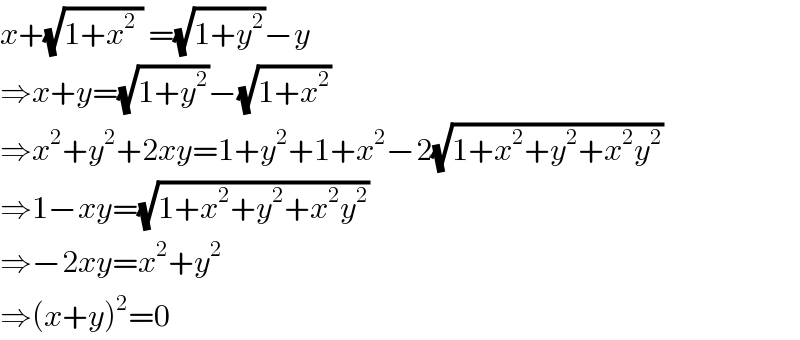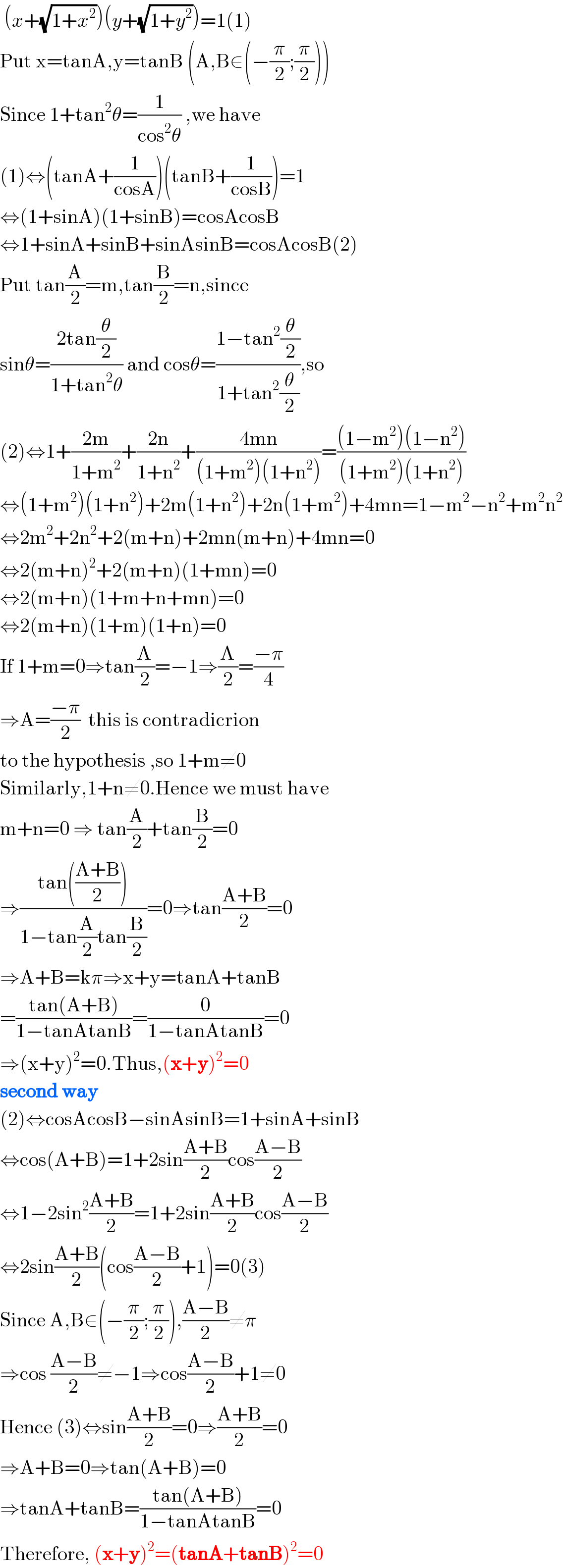
Question and Answers Forum
Question Number 108291 by bemath last updated on 16/Aug/20

Answered by john santu last updated on 16/Aug/20

Commented by bemath last updated on 16/Aug/20

Commented by udaythool last updated on 17/Aug/20

Commented by udaythool last updated on 17/Aug/20

Answered by 1549442205PVT last updated on 16/Aug/20

